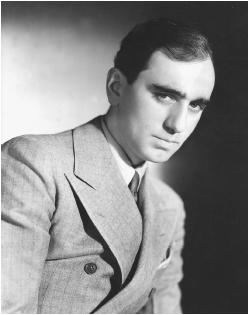A choreography award made perfect sense when musicals were packing them in at the box office, but the Academy presented one for only three years. Hermes Pan came in second this year and Busby Berkeley was third.
The nominees were ...
- Busby Berkeley, "Lullaby of Broadway" and "The Words Are In My Heart" numbers from Gold Diggers of 1935
- Bobby Connolly, "Playboy from Paree" number from Broadway Hostess; and "Latin from Manhattan" number from Go Into Your Dance
- Dave Gould, "I've Got a Feeling You're Fooling" number from Broadway Melody of 1936; and "Straw Hat" number from Folies Bergere
- Sammy Lee, "Lovely Lady" and "Too Good To Be True" numbers from King of Burlesque
- Hermes Pan, "Piccolino" and "Top Hat, White Tie, and Tails" numbers from Top Hat
- LeRoy Prinz, "Viennese Waltz" number from All the King's Horses; and "It's the Animal in Me" number from Big Broadcast of 1936
- Benjamin Zemach, "Hall of Kings" number from She
And the Oscar went to ...
Dave Gould, "I've Got a Feeling You're Fooling" number from Broadway Melody of 1936; and "Straw Hat" number from Folies Bergere.
... when it should have gone to ...
Busby Berkeley, "Lullaby of Broadway" and "The Words Are In My Heart" numbers from Gold Diggers of 1935.
 |
| Busby Berkeley |
His name is almost synonymous with the musicals of the 1930s, with their chorus girls forming kaleidoscopic patterns and the production numbers that turn into minidramas. His work as a leading choreographer of Broadway musicals brought him inevitably to Hollywood with the advent of sound, when comedian Eddie Cantor asked him to choreograph the film version of his musical Whoopee! Berkeley was quick to see that film allowed for more than just the head-on shooting of a musical number as if you were watching it on stage, as in the Oscar-winning Broadway Melody, for example. Though he was not the inventor of the overhead shot, he made it his trademark along with close-ups of chorus girls' faces. He ignored the constraints of time and space: Even when a number was supposedly taking place in a theater, he introduced scene changes and intimate close-ups that would have been impossible in the real world. In 1933 he began his relationship with Warner Bros.,where he moved into directing as well as choreographing films, including Gold Diggers of 1935 and such non-musicals as John Garfield's They Made Me a Criminal. In 1939 he moved from Warners to MGM, where he directed and choreographed the Judy Garland-Mickey Rooney "hey kids, let's put on a show" musicals Babes in Arms, Strike Up the Band, and Babes on Broadway, as well as Gene Kelly's debut film, For Me and My Gal. He also did some work at 20th Century-Fox, most notably on the extravagant Carmen Miranda number "The Lady in the Tutti-Frutti Hat" for The Gang's All Here, which featured chorus girls doing things with giant bananas that make one feel sure the censors had never read Freud. Back at MGM he was also responsible for many of the aquatic numbers in movies starring Esther Williams. He came out of retirement in 1971 to supervise the Broadway revival of Vincent Youmans's No, No, Nanette, which featured his old Warners star Ruby Keeler, though there is some dispute about how much of a contribution the 75-year-old Berkeley actually made to the show.
Possibly the greatest of all of Berkeley's Warners numbers, with its expressionistic sets (Anton Grot), lighting and camera angles (George Barnes). The climax, with the madly tapping chorus line spooking the Broadway baby (Wini Shaw) into her fatal fall, has been seen by some as a Berkeleyan commentary on the rise of fascism, particularly the entrance of the men, who seem to be giving a one-armed fascist salute.
Not quite as great, but who other than Berkeley would fill a sound stage with dancing pianos?
No comments:
Post a Comment